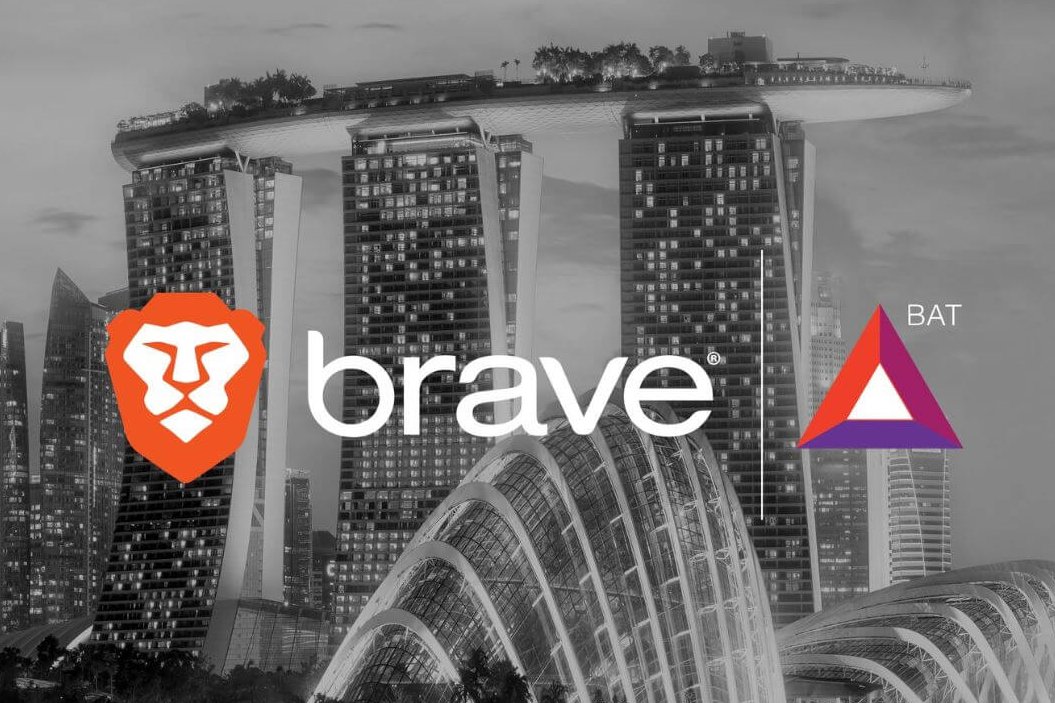

The Brave browser is an innovative alternative web browser that aims to decentralise web browsing while removing intrusive third-party advertisements.
The Brave browser was created by Brendon Eich, who also helped to create the Mozilla Firefox web browser and the JavaScript programming language.
Brave is a privacy-driven application which also happens to be blockchain-friendly.
The Brave browser is an open source project built on Chromium, which is itself an open source project maintained by Google. Google uses Chromium to provide the source code for its Chrome browser.
The Brave browser currently has support for Windows, MacOS, Linux, Android, and iOS.
The aim of Brave is to give users power over which advertisements they see and ultimately remove any third-party ads that could be considered intrusive. It also aims to remove third-party trackers.
To give users power over which advertisements they see, Brave verifies ‘publishers’ who can then put their advertisements on the browser. Users can then opt-in to see them if they so choose.
For example, Chess.com – a popular website where users can play online chess – is a verified Brave publisher.
Users can then be paid in crypto for watching verified publishers’ advertisements.
Because Brave blocks third-party advertisements, there is less content for the browser to download when users are surfing the web, which means its loading times are quicker than many popular browsers.
According to its website, the page load time is up to two times faster on desktop and up to eight times faster on mobile devices compared to Chrome and Firefox.
Furthermore, since ad trackers are also eliminated from the equation, Brave provides greater anonymity for users who do not wish to be tracked based on the sites they visit or items they purchase.
The ultimate aim for Brave is to not wipe out advertisements altogether, but rather to replace them with a monetary-orientated, incentivised system.
In doing so, intrusive ads can be removed to enhance user experience but companies can still advertise their products or services.
While this could present inconvenience for companies, by offering users monetary incentive, the user is more inclined to engage with the advertisement which then benefits both the user and publisher.
The Brave browser is blockchain-friendly because of its use of the ‘Basic Attention Token’ (BAT).
BAT is the token awarded to users for giving up their time to watch publishers’ advertisements. BAT is based on the Ethereum blockchain.
The browser itself measures user activity and rewards them based on the amount of attention paid to the advertisements they watch.
When using Brave, users will be able to see their BAT balance and their attention percentage, and they will also be given the option to send tips using BAT.
On the publisher’s side of things, providing they have linked a working Ethereum wallet, any tips they receive will be directly sent to the wallet address.
This is a process that heavily relies on blockchain, as with all crypto transactions. Blockchain technology is a type of ‘distributed ledger technology’ (DLT), which in essence means it is an immutable public ledger.
This ensures that the data integrity remains intact while also guaranteeing information cannot be retroactively changed. In turn this assists Brave with managing the distribution of BAT tokens.
Brave has a strong emphasis on privacy, and as such it has a wide array of features that help achieve privacy for the user.
For one, any information stored on Brave stays private on the device the browser is being used on. It will remain that way until users delete the information.
Brave notes on its website that it will never sell user data to third parties.
Users will also be able to customise their ‘shield settings’. This means they will be able to designate settings on a per-site or browser-wide basis.
For example, users can select how many ads and trackers they wish to block with Brave every day on the ‘new tab’ page.
Whenever it is possible, Brave will automatically upgrade to HTTPS (hypertext transfer protocol secure) for a more secure and encrypted means of communication where an ordinary browser might continue running on an insecure connection.
Brave also has default settings that will assist users with their security. For instance, if a plugin has proven to be risky, Brave will disable it.
Users will also have the option to use ‘Brave sync’, which is currently in beta. This enables them to encrypt and synchronise their preferred settings and bookmarks. Brave does not have access to the keys that encrypt the data.
As an independent publication, we do not recommend any cryptocurrency, project, or browser in particular, and as such you should always conduct your own research before committing to any decisions. Ultimately, you are responsible for any decision you make.
Interested in reading more Brave and BAT-related content? Discover how users of Coinbase Earn can net themselves BAT tokens for watching tutorial videos.
Denver, Colorado, 24th February 2025, Chainwire
Denver, Colorado, 20th February 2025, Chainwire
Washington, D.C., 18th February 2025, Chainwire
Dubai, UAE, 27th January 2025, Chainwire
Those who enter the market at this time may be surprised to hear that Bitcoin…
George Town, Grand Cayman, 22nd November 2024, Chainwire